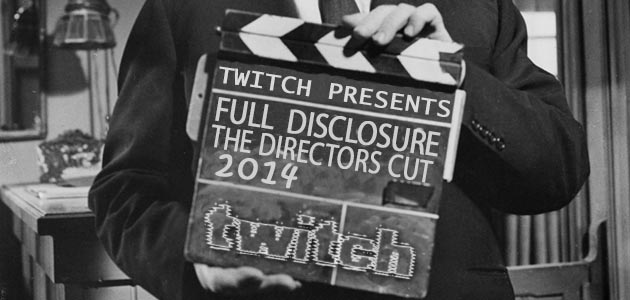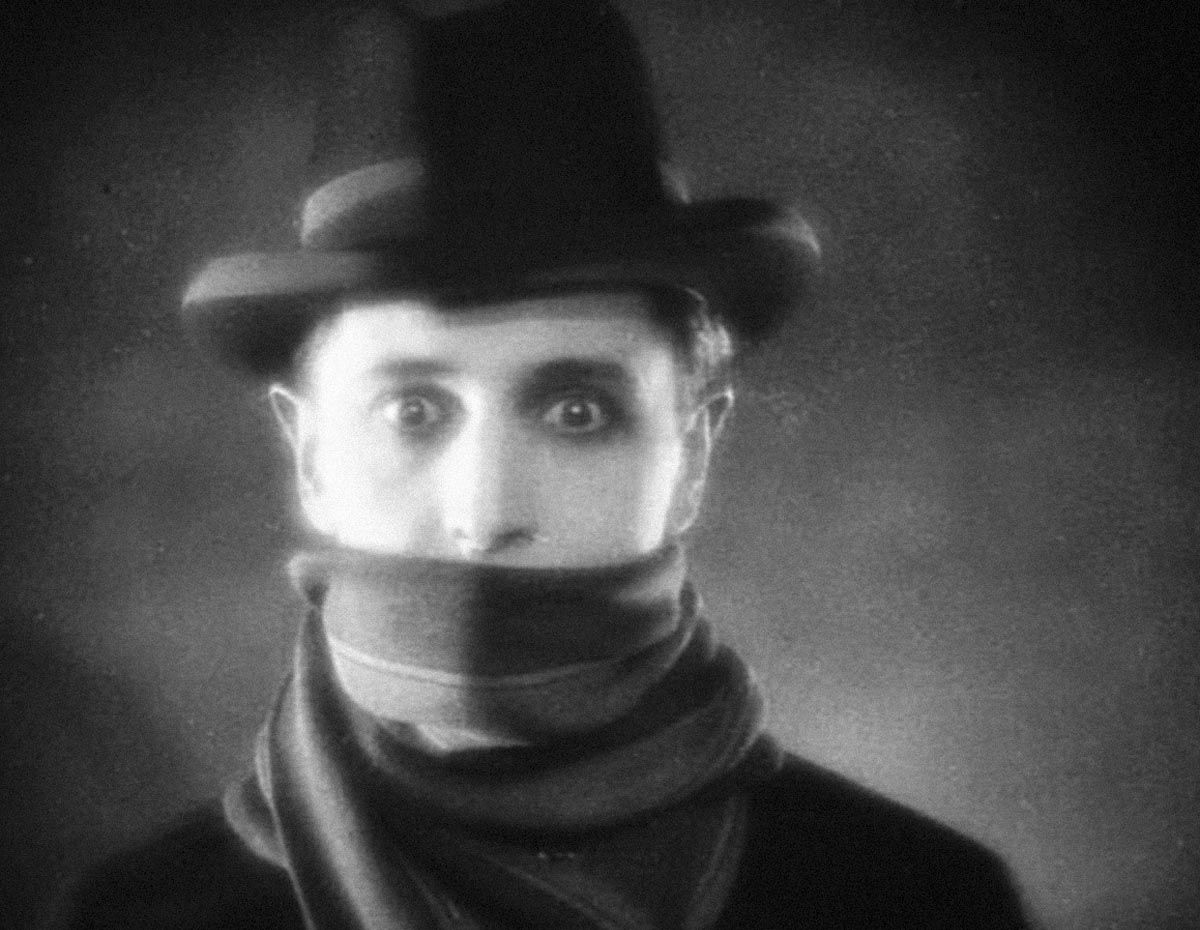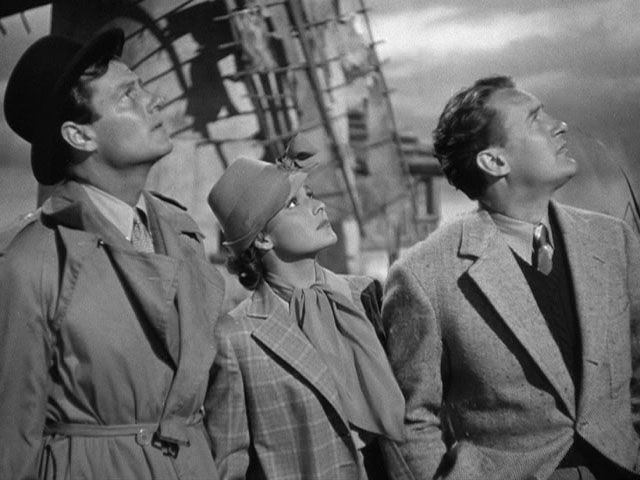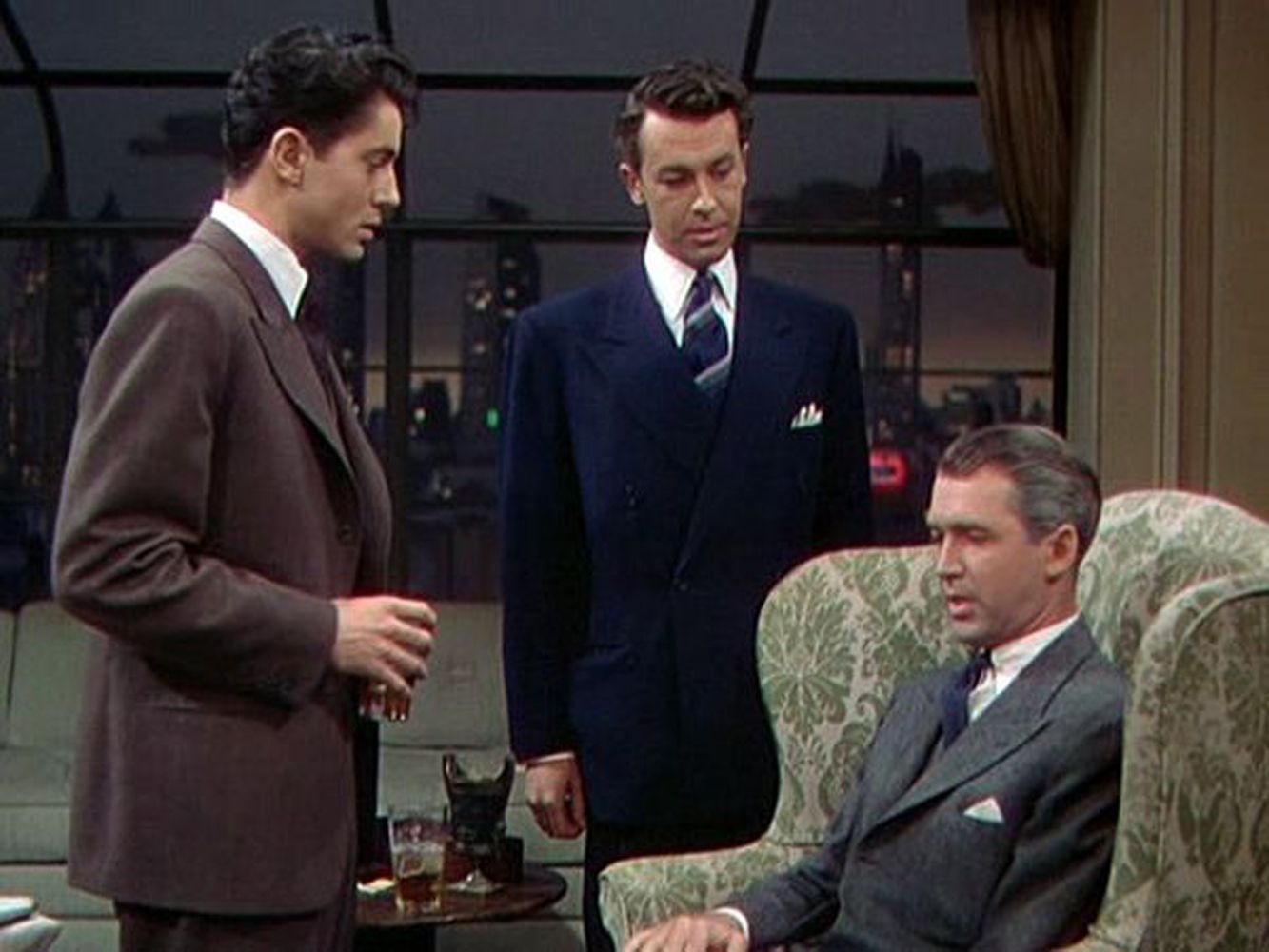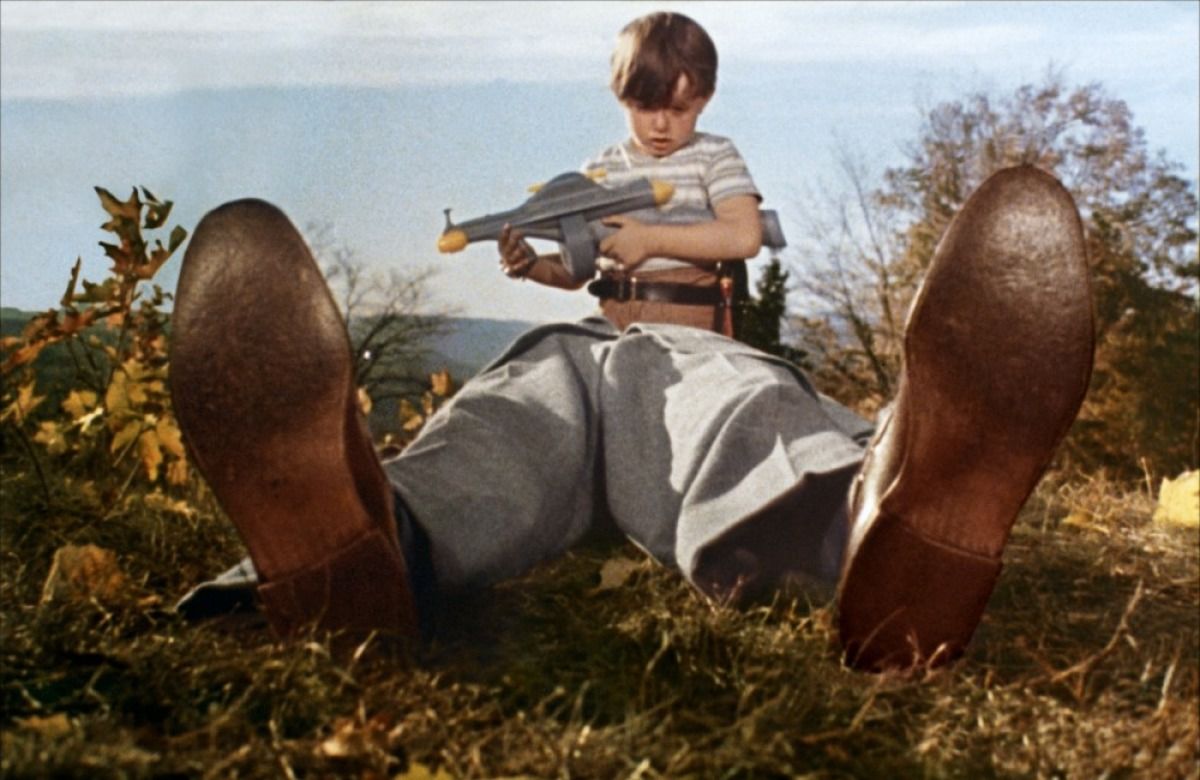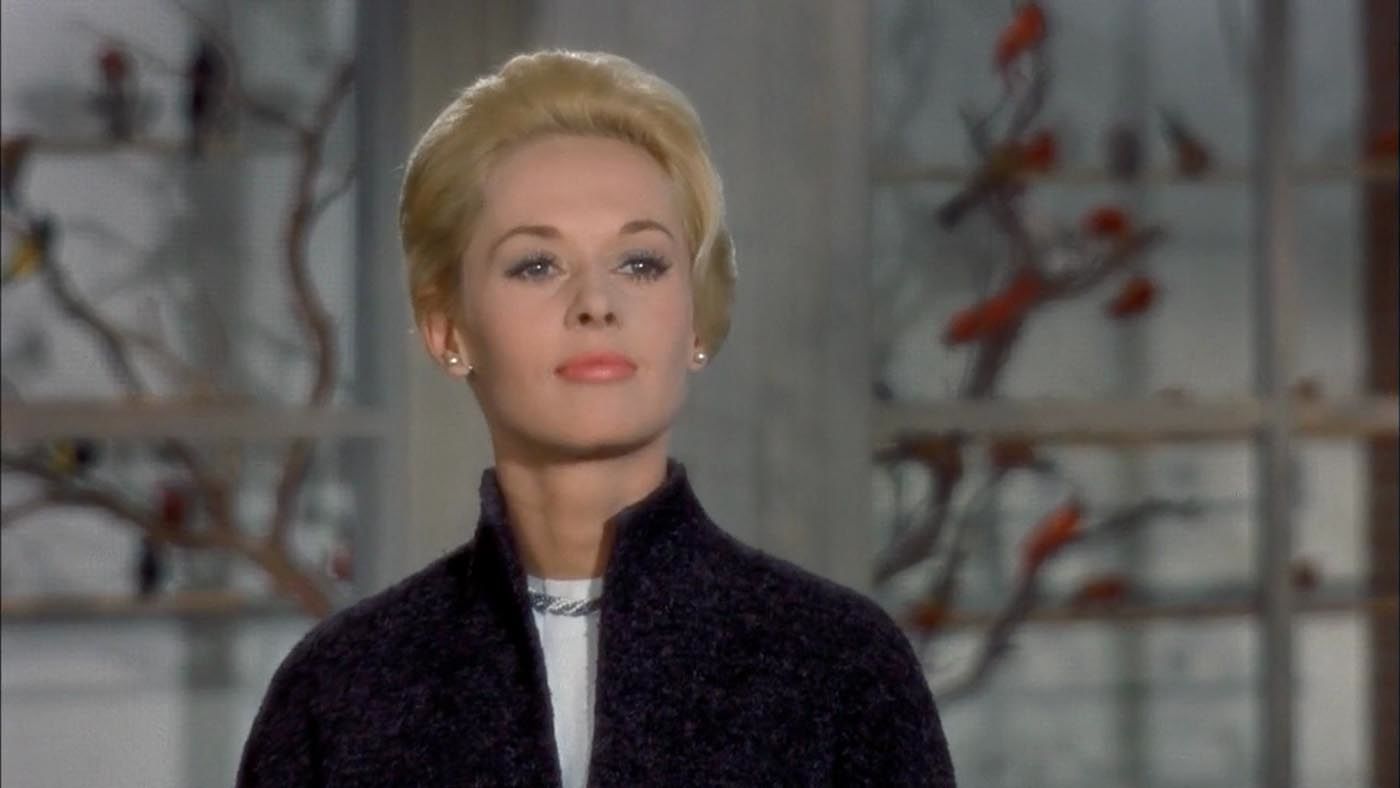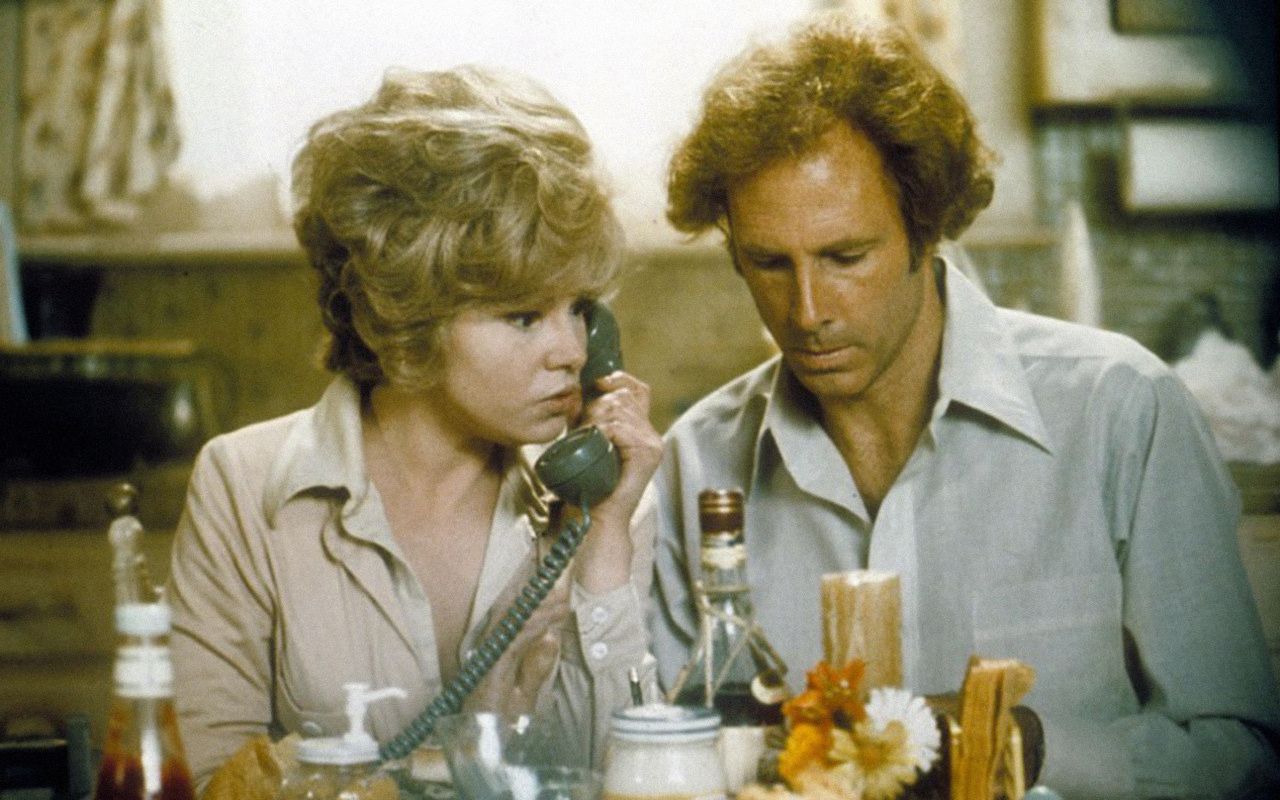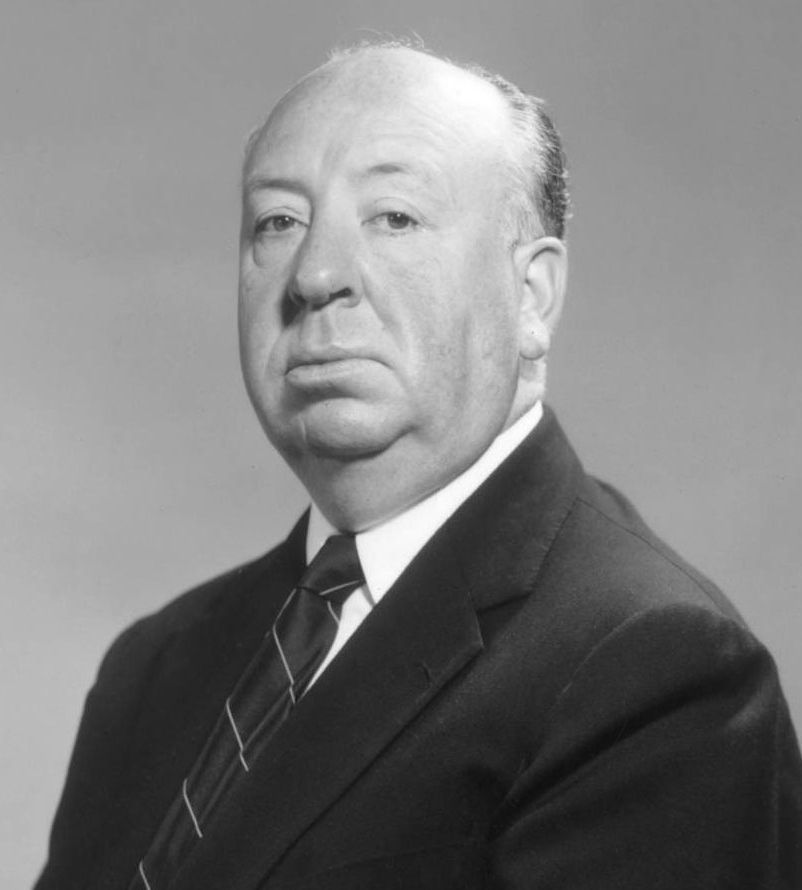Ard Vijn, Shelagh Rowan-Legg, Ernesto Zelaya Miñano, Jaime Grijalba Gomez, Jim Tudor, Peter Martin, Pierce Conran and Christopher O'Keeffe
contributed to this story.











The Lodger: A Story Of The London Fog (1927, UK)
Christopher O'Keeffe - Contributing writer
At mention of the name Alfred Hitchcock, I immediately think of the spectacular images from the director’s hugely successful later output, featuring the biggest players of the day. Carey Grant’s cornfield plane chase, James Stewart staring quizzically from behind his camera, Tippi Hedren screaming in terror as The Birds attack and of course that infamous shadow cast across a shower curtain. With these shots so synonymous with a man whose own image is as famous as his films, it’s easy to forget what a great deal of work he put in prior to his career really hitting its peak in the 1950s - including his work back in the days of silent cinema.
The Lodger: A Story Of The London Fog is the first film that Hitchcock himself considers ‘a real Hitchcock film’, and it’s not difficult to see why. On the surface it may appear different to his later big-budget Hollywood offerings, having been made in the silent era, but it contains all the mystery and suspense that came to define the master.
On a foggy night in London a woman is found murdered, and the girls of a nearby cabaret show are, despite their jokes, nervous. This is the latest in a line of murders terrorizing the city by a villain who always leaves his calling card on the body of his, blonde, female victims – ‘The Avenger’. One such blonde dancer, Daisy Bunting, makes her way home to her family and lover, a police detective looking to make his name with the capture of the famed criminal. Into the household arrives a mysterious stranger looking for lodging, a man whose peculiar habits and suspicious comings and goings all suggest to the family that he himself may be The Avenger, and pretty Daisy seems to be falling for his charms…
Hitchcock is hugely effective at creating a sense of mystery around Ivor Novello’s lodger from the outset. His shadow is first seen approaching the Bunting’s door and we feel the landlady’s shock at seeing the tall, gaunt figure dressed in black, his face half-covered by a scarf and hat, fitting, as it does, the description we’ve been given of the murderer. When he removes all the pictures of blonde women from his room it doesn’t immediately set alarm bells ringing for his landlords, but it does for us, the audience. When the innocent family do start to have suspicions about their mysterious guest, they are forced to imagine the man in the room above them, due to the swaying ceiling light and sounds of him pacing the room.
The Avenger himself is little more than one of Hitchcock’s famous MacGuffins, we never find out the identity of the killer, nor exactly what he’s avenging, but his crimes influence the action of the film. For insight into the director's development, evidence of Hitch’s influence from the German expressionists, in particular Fritz Lang, is apparent. Check out the ominous shadows cast from a window pane set at an abstract angle above the frightened mother's bed.
The Avenger may no longer work as a pseudonym for a serial-killer, associated as it has become with an entirely different cinematic universe, but The Lodger: A Story Of The London Fog is an excellent thriller, that keeps its mysteries hidden until the very end.
Blackmail (1929, UK)
Pierce Conran - Contributing writer
I had to go back pretty far to find an Alfred Hitchcock film I hadn’t seen and I eventually settled on Blackmail, my 40th in his catalogue. His first sound film, though initially produced as a silent feature, Blackmail marks a technical turning point for the filmmaker. Like many films from this period, the new techniques, which were still being experimented with, give the film a rough and stilted feel. And yet, there are still plenty of Hitch’s trademarks in this great suspense thriller.
Even in the 1920s, Hitchcock was already the master of suspense. The film opens with men in long coats and grim countenances darkening the doorway of a man they’ve come to arrest. The criminal catches a glimpse of them through a sliver of a mirror and slowly slides his hand towards his gun. It’s a great start that sets up the shady narrative to come. The story of a blonde who inadvertently kills an artist late at night in his top floor studio while trying to rape her, Blackmail ramps up its morally ambiguous tale with strong film style, particularly for the time, adorning the mise-en-scene with fast push ins, tracking shots, smash cuts and some terrific framing.
The transition to sound offers obstacles that should be taken as a necessary evil as the medium transitioned into what we know it as today, but Blackmail is vintage Hitch, at a time when he was still developing his craft. Also, watch out for his unusually long and easy-to-spot cameo.
Secret Agent (1936, UK)
Peter Martin - Managing Editor
Having already seen nearly all of Alfred Hitchcock's Hollywood productions, this series prompted me to dip back into his earlier British film output. Admittedly, the home video versions I've seen are not in very inviting shape, but I picked one from 1936: Secret Agent.
Arriving on the heels of 1934's The Man Who Knew Too Much and 1935's The 39 Steps, both of which I'd seen and enjoyed some years ago, I found Secret Agent to be a delightful thriller. John Gielgud, just 32 at the time, stars as Brodie, a spy during the First World War, who sees in the newspaper that he has "died." It's a set-up for him to be sent to Switzerland, where he is to meet up with an espionage agent known as The General (Peter Lorre) and then locate and kill a German agent. Upon arrival, Brodie discovers that he is "married" to fellow operative Elsa (Madeleine Carroll), who is being romanced by a persistent American lothario (Robert Young).
As often happens with Hitchcock's thrillers, the moments that stand out are the set-pieces: extreme close-ups of Gielgud and Lorre talking while a church bell rings loudly; an attempted murder witnessed through a telescope; a tracking shot in a candy factory; a train packed with German soldiers, which is the setting for the resolution of the story. Secret Agent sometimes dawdles, getting a bit too caught up with run-of-the-mill melodrama, and its period-accurate sexism comes across as quite boorish nowadays, yet it's an engaging piece of work, a marker of progress for Hitchcock as he continued to refine and develop his graceful style.
Foreign Correspondent (1940, USA)
Nominated for 6 Academy Awards, including Best Picture, Best Director and Best Original Screenplay
Jim Tudor - Contributing writer
“Keep those lights burning, cover them with steel, ring them with guns, build a canopy of battleships and bombing planes around them. Hello, America, hang on to your lights: they're the only lights left in the world!”
Not to spoil anything, but those are the impassioned closing words of Alfred Hitchcock's 1940 pre-war thriller, Foreign Correspondent. Joel McCrea, the then-ubiquitous Hollywood leading man, delivers them to America via live radio as London is bombed around him. Politically active producer Walter Wanger had Ben Hecht wrote this final tag to the film, which otherwise plays less like standard WWII propaganda and more like traditional Hitchcock. Meaning, Foreign Correspondent, while tweaked repeatedly in production to reflect the of-the-moment realities of the prevailing war, remains an entertainment of zigs, zags, quips, suspense, and thematic set pieces.
There's the famous windmill sequence, where reporter McCrea's notice of spinning the wrong direction funnels him into an enemy hornets nest. There's the passenger plane crash into the ocean, a technical marvel of the time that still excites. And of course, there's the film's most famous portion, the assassination outside the government building. In all of these, and the thread that holds it all together, Hitchcock demonstrates his celebrated visual mastery, and that he is indeed the perfecter of the modern set-piece driven adventure film. Although Foreign Correspondent is a large-scale American outing – Hitch's first, garnering him much criticism for abandoning “Hot Europe” (as the “Hotel Europe” neon sign reads after two of the letters are broken) just as things were getting tense – the director clearly maintains a keen sensitivity for his homeland's situation, even as he valiantly does what he does best – entertain.
But this being WWII Cinema, the propaganda tag at the end is to be expected. What caught my wife and I off-guard as the film ended was the blurry intent of the speech, something that admittedly SOUNDS more like a possible call to isolationism than it reads. Although further research and 20/20 hindsight tell us that Wanger, Hitchcock and Hecht meant no such thing, there's a particular safety in the phrasing that tell us more about America's 1940 on-the-fence position (and how these storytellers approached that without alienating their domestic audience) than it serves as another sledgehammer call-to-arms that came to be the norm later.
Foreign Correspondent, sometimes stilted, isn't essential Hitchcock, but it illuminates.
Rope (1948, USA)
Ernesto Zelaya Minano - Contributing writer
I’ve got a problem with movies from Hollywood’s so-called Golden Age. The premises to a lot of them sound dark and incredibly lurid, but everything just seems too prim and proper, everyone comes off as too clean cut; almost as if it’s hard for them to ditch that Ye Olde Tinseltown glitz and glamour. For one, doesn’t it seem as if they all reuse that same bombastic orchestral score?
Thankfully, Rope is more than that; this is Hitchcock we’re talking about, and he certainly didn’t care what the studios wanted. The story about two budding sociopaths trying to cover up a murder in the middle of a dinner party, and outsmarting their Sherlock-like former professor, could have used more grit and darkness, but it’s not all smiles either.
Obviously, this wasn’t filmed in one take, and the cuts are sometimes painfully obvious (I counted seven), helped by my DVD copy pausing for a brief second between each one. But it’s still quite a thing to have a movie be made entirely in long takes and able to maintain the suspense for that long. The final twenty minutes, with both James Stewart and John Dall attempting to outsmart each other, is great stuff. In fact, the entire movie is just a build-up to this sequence, which would have made a great episode of Tales From The Crypt during its heyday with just a few changes (they’d probably show the corpse in all its gory detail); this is the type of twisted tale they would go for. I’m biased though, since I love that show dearly.
Hitchcock could have cared less about the Hays Code; this is a macabre premise, one that probably shocked more than one viewer back in the day. It’s sometimes let down by the filmmaking tropes of the era – histrionic, soap opera-style acting, for one – but it does what it’s supposed to: keep you guessing right up until the perfect final shot.
Really, it’s hard to give a bad review to a Hitchcock film. He wasn’t called the Master of Suspense for nothing, and there’s always something in his films to keep you watching. In this case, the technique of shooting in long takes is one that any filmmaker should take note of. I’ve yet to be disappointed by one of Hitch’s films, and this was no exception.
The Trouble With Harry (1955, USA)
Nominated for 2 BAFTAs, including Best Film and Best Foreign Actress
Ard Vijn - Contributing writer
Alfred Hitchcock was a menacing presence throughout my early life, a figure of horrific legend. My mother loved his films, and I had a healthy interest in horror, so she explained many of the films I was too young (or, more truthfully, too scared) to watch. Having the nick "Master of Suspense" didn't help, as I was terrible with suspense. Hell, just hearing a scary music cue made me duck and hide!
The first Hitchcock I ended up seeing (after careful pushing and prodding by Mom) was To Catch A Thief, and I was pleasantly surprised by the humour and excitement in that film. I became a fan and discovered that even his 'horror' thrillers were actually palatable.
Now, more than thirty years later, I had a bit of a hard time finding a famous Hitchcock I hadn't seen yet. But lo and behold: there was The Trouble With Harry. I knew the film had inspired a good deal of other "corpse-humour" films, and was curious just how far Hitch was allowed to take things back in 1955. The answer is: pretty damn far.
The entire film is about a corpse (the titular "Harry") being discovered, and how everyone tries to hide or present it in such a way as to reap the most benefit from it for themselves. While there are no Weekend at Bernie's gross-out jokes, and everyone comes across as pleasant and sympathetic, the cast's indifference to the poor man's fate is both funny and chilling.
The film has dated, but not too badly. Young Shirley MacLaine is cute, and the Vermont locations look ironically beautiful for the grim occasion. The jokes are not so much funny as bizarre, for being told in such a dead-pan fashion. Also, in a few scenes, Hitchcock performs his famous playing-around-with-audience-expectations trickery. All in all, I liked it a lot!
The Birds (1963, USA)
Winner of the Golden Globe for Most Promising Newcomer - Female, nominated for the Academy Award for Best Visual Effects
Jaime Grijalba - Contributing writer
A masterpiece from the Master of Suspense, and let's admit it, also a Master of Horror. Maybe he didn't think much of the genre itself, specially since until the 1960s it was mostly filled with low grade science fiction creature movies, but he certainly managed to make a magnificent work of art and technical proficiency with this movie.
You just need to read or watch any documentary on the making of The Birds to understand that this isn't just some throwaway film he made to cash in, or to maintain some kind of "name" for himself after Psycho. It was one of the most audacious shoots and projects ever attempted by the studio up to that point. Never mind the big epics with thousands of extras, they are easy to handle, let's just think for a moment that he had to handle fake, mechanical, real and trained birds, and all of them had to look exactly as real as the next one. That is a feat that no one had even come close to, hence the lack of any other great movies about birds attacking people (just think of the semi-official sequel to this movie and all the Birdemics of the world).
Tippi Hedren might not be great in this movie, but her sweetness and cocky attitude in the first half of the movie compensates for any mistakes she might make in the second half. Nevertheless she finds herself as a strong female figure that ends up so damaged that we can't help but feel pity for her. Specially when it comes down to the harsh and incredible attitude of the last scenes, how much of the physical damage done to Hedren was actually real most of the time, and how the construction and editing of those scenes are made so effective.
The film works, it's scary, it manages to create a mood, it's claustrophobic and at the same time, like a silent film, it manages to summon up the dread that would happen if confronted with a situation like this.
Topaz (1969, USA)
James Marsh - Asian Editor
At 143 minutes, Topaz would prove to be Alfred Hitchcock's longest film. Sadly, it is also one of the least successful of his Hollywood offerings. In a break from tradition, Hitchcock did without A-list names, but rather populates his political espionage thriller with notable European character actors, and unknown performers he hoped (and failed) to transform into stars.
Based on the novel by Leon Uris, which was itself inspired largely by true events, Topaz begins with the defection of a high-ranking KGB official to the USA, who reluctantly reveals that the Russians have a network of moles within the French intelligence communities, and have also positioned numerous missiles in Cuba, just off the US coastline.
The film's flawed hero is French agent Andre Devereux, played by unknown Czech-born performer Frederick Stafford (apparently after Sean Connery turned it down). Tight with the Americans, Devereux's superiors are suspicious of him, while the Americans are reluctant to let any info get back to the French for fear it will be leaked to the Russians. Nevertheless, Devereux heads to Havana to seek out the truth, where he has an ongoing relationship with the gorgeous Juanita (former Bond girl Karin Dor), squeeze of John Vernon's General Parra, despite Devereux having a wife and daughter back in the States.
At times, Topaz aspires to be a Bond-style spy thriller, but surprisingly for a Hitchcock film, lacks the necessary excitement, pace or tension. At other times it feels remarkably similar to John Le Carre's Tinker, Tailor, Soldier, Spy, but only in the final act. Elsewhere, there's too little of the real-life Cuban Missile Crisis playing out for Topaz to qualify as a historical thriller, and instead simply meanders along for an exhausting two-and-a-half hours.
Stafford's two-timing Devereux is dull and unsympathetic, openly cheating on his wife while displaying flip-flopping loyalty to his own country. Hitchcock apparently rewrote the script numerous times, and shot at least one other ending at the behest of Universal, neither of which is genuinely satisfying. With precious few action beats, and little opportunity for Hitchcock's visual flair, the result is a dry, laborious effort that offers only sparse glimpses of the ambitious thriller that could have been.
Family Plot (1976, USA)
Nominated for the Golden Globe for Best Actress - Musical/Comedy
Shelagh M. Rowan-Legg - Contributing writer
For Bergman last month, I chose the earliest film I could find. For this month’s look at Alfred Hitchcock, of whose oeuvre I have seen the majority, I went as late as possible. In this case, I was able to watch what turned out to be his final feature film, Family Plot (1976).
Hitchcock is often called the Master of Suspense, with good reason. Many of his most famous films revel in thriller and sometimes horror qualities, designed to make his audience squirm. There is often a lot of humour as well, especially in his early films, though it is sometimes forgotten. In the case of Family Plot, it is more similar to films from his early UK (pre-Hollywood) period, combining comedy with suspense.
A con artist (Barbara Harris), who pretends to be psychic, and her sometime detective boyfriend (Bruce Dern) are sent to find the long-lost nephew of a rich old woman; the nephew (William Devane), unaware of his family inheritance, and his girlfriend (Karen Black) are already criminals, kidnapping people for ransom.
It has a fairly interesting plot in theory, and there is one decent suspenseful scene involving a car with cut brake lines on a winding road. But I can’t say the film is a great success. There is a slowness that makes the jokes fall flat, too much space between lines, too often a feeling of ‘we’ve done this before’. Apparently, Hitchcock was already in declining health during production, so this might explain the tired feeling and lack of tight pacing. The actors all pull off their characters amiably, but there is also a feeling of them being lost, a sense that their lines just disappear as soon as they’ve said them.
Still, a weak Hitchcock film is still a Hitchcock film, so I wouldn’t advise against seeing it. For those familiar with his work, it might feel like an old, comfy blanket, somewhat the worse for wear, but still with a bit of warmth. But his penultimate feature, Frenzy (1972), set in his native London, might be a better one to remember him by before his passing.

Around the Internet
Recent Posts
THE COPENHAGEN TEST Review: Under Surveillance
Friday One Sheet: The Best Posters of 2025
Leading Voices in Global Cinema
- Peter Martin, Dallas, Texas
- Managing Editor
- Andrew Mack, Toronto, Canada
- Editor, News
- Ard Vijn, Rotterdam, The Netherlands
- Editor, Europe
- Benjamin Umstead, Los Angeles, California
- Editor, U.S.
- J Hurtado, Dallas, Texas
- Editor, U.S.
- James Marsh, Hong Kong, China
- Editor, Asia
- Michele "Izzy" Galgana, New England
- Editor, U.S.
- Ryland Aldrich, Los Angeles, California
- Editor, Festivals
- Shelagh Rowan-Legg
- Editor, Canada


